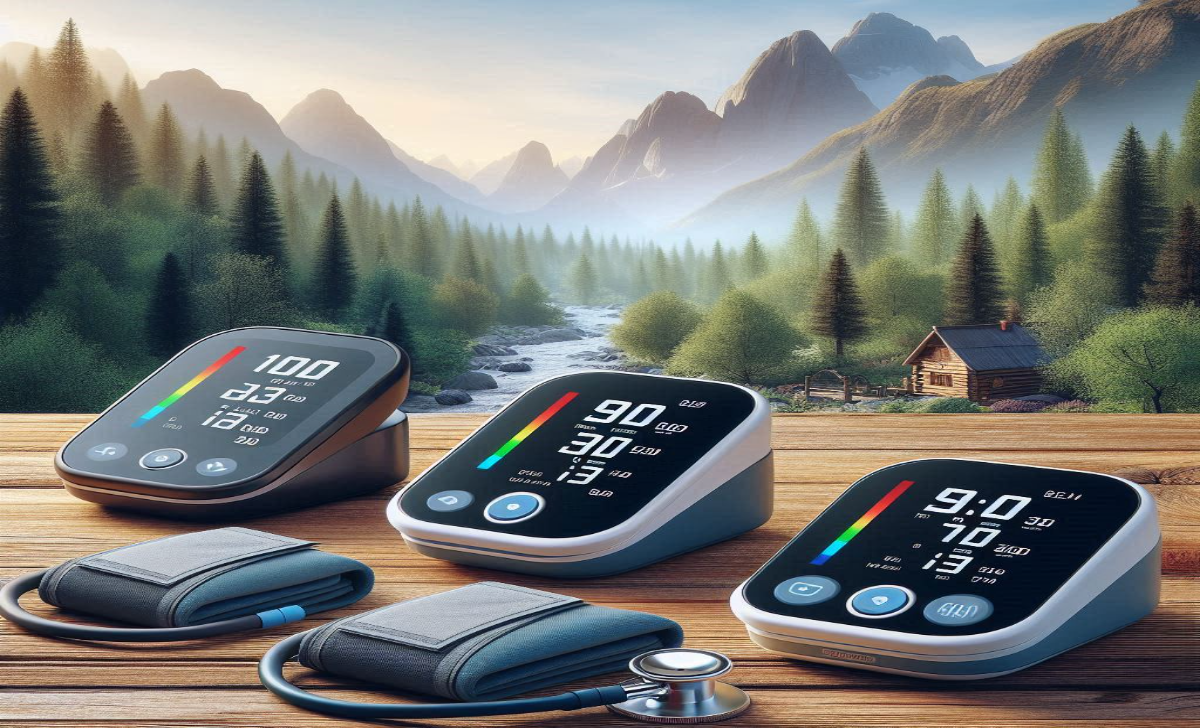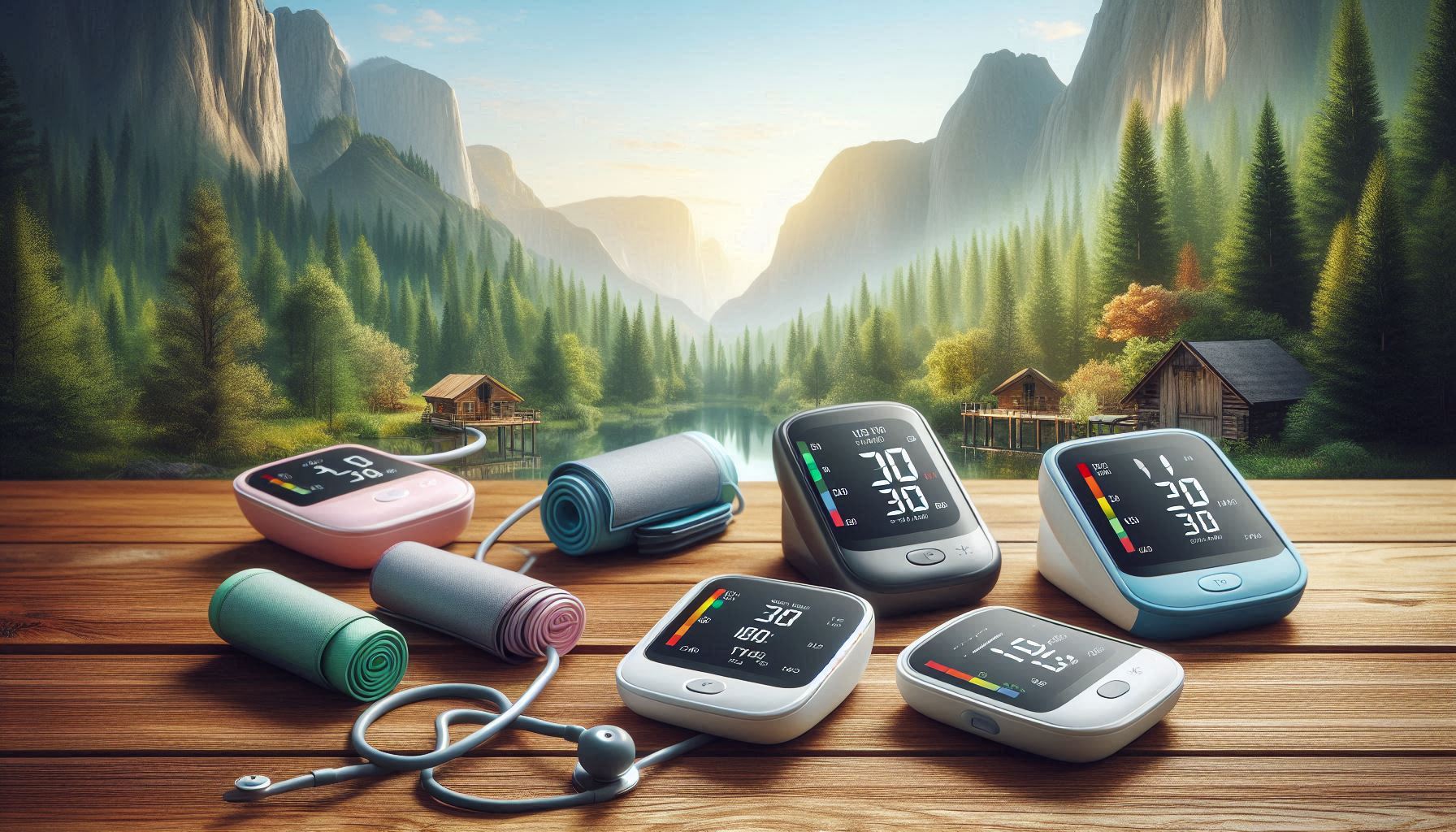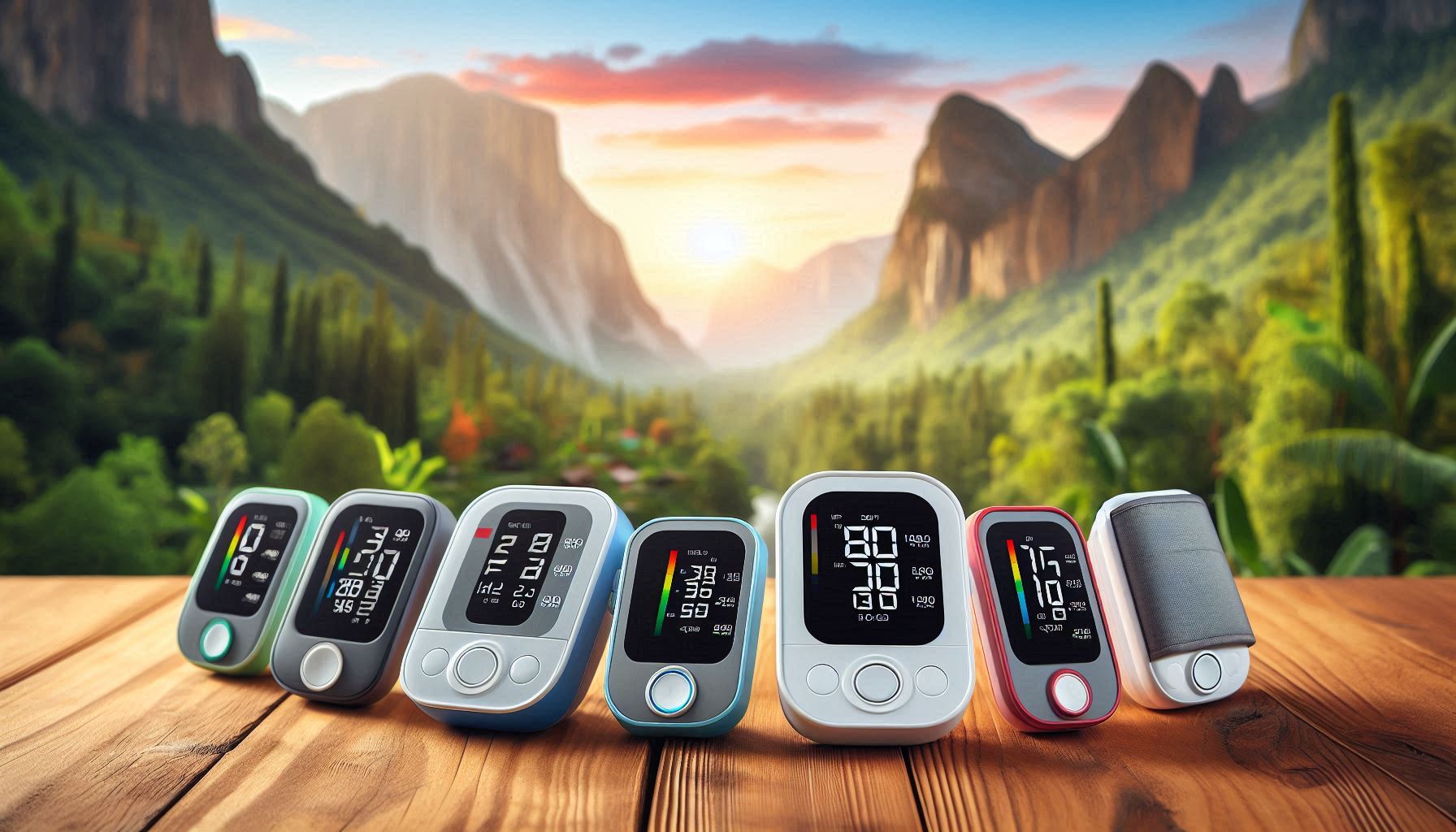Do you currently use a blood pressure monitor? Do you take it with you when you travel? In this article, we shall be focussing on the Best Blood Pressure Monitor For Travel. Please let us know in the comments section at the bottom of the page what your thoughts are of your blood pressure monitor.
Introduction
When managing your health on the go, a reliable blood pressure monitor can offer invaluable peace of mind. Whether you’re traveling for work, vacation, or visiting family, maintaining your routine includes keeping an eye on key health metrics. Portable blood pressure monitors are designed for convenience, accuracy, and durability. So you don’t need to skip monitoring while away from home.
In this guide, we will explore the best blood pressure monitors for travel, taking into account size, accuracy, battery life, ease of use, and smartphone integration. We will help you understand what to look for in a travel monitor and offer recommendations that combine precision with portability. With the right device, you can relax while you stay on top of your heart health no matter where your journey takes you.
Why Choose a Travel Blood Pressure Monitor?
Consistency Matters
When you’re away from home, your daily routine often changes and so can your blood pressure. Traveling can introduce stress, different climates, time zones, and dietary changes. Having a compact monitor allows you to check consistently and share accurate readings with your healthcare provider.
Portable and Lightweight
Travel monitors are designed to be lightweight and small. Usually fitting into a purse, carry on, or even a large pocket. Their compact size and protective cases make them perfect for flights, road trips, or business travel.
Battery and Power Convenience
Many models use batteries or come with USB chargers that can be powered from a laptop or power bank. This ensures your monitor stays powered throughout long trips, even where outlets are scarce.
Digital Integration
Most travel monitors offer Bluetooth syncing with mobile apps. This simplifies tracking and allows you to securely share logs with doctors via email or app export features. That integration makes it easier to review travel related data trends later.
Key Features to Consider for Travel Use
1.Accuracy and Validation
Choose monitors validated by respected health organizations for home use. Clinical accuracy is especially important if you rely on readings for medication decisions.
2.Compact, Lightweight Design
Most models weigh under 250 grams and come ready to pack. Look for sizes under 10cm in width and accompanied by a travel case.
3.Dual Power Modes
Monitors with both battery and USB charging options are ideal. They avoid the risk of being stranded without power mid trip.
4.Memory and Multi User Support
Onboard memory lets you track readings over time. Some devices can store data for multiple users without needing nearby apps.
5.Connectivity Features
Bluetooth is essential for syncing with apps. Smartphone notifications, reminders, and trend visualization enhance usability.
6.Usability
Large, well lit displays and intuitive one button operation help when traveling or in dim environments such as hotel rooms or taxi rides.
7.Cuff Size and Fit
A conventional upper arm cuff offers the best accuracy. Look for cuff ranges from 22 to 42 cm to fit various users. Choose models with extra small or large cuffs if needed.
Top 5 Travel Blood Pressure Monitors
1. Omron Evolv
- Overview: Fully wireless, upper arm monitor with built in cuff.
- Weight: 240 grams including batteries.
- Power: 4 AA batteries, USB adapter included.
- Key Features:
-
- Clinically validated accuracy.
- Single button operation.
- Stores 100 readings per user (2 users).
- Bluetooth syncs with Omron Connect app.
- Pros:
-
- Ultra portable, no tubes.
- FDA approved.
- Multi user memory.
- Easy to use on the road.
- Cons:
-
- Batteries need replacement mid trip.
- USB cable needed but not USB C.
Why it is a top travel monitor: It blends accuracy with real portability and clean, cable free design.
2. Withings BPM Connect
- Overview: Lightweight, wall powered upper arm monitor with Wi Fi and Bluetooth.
- Weight: 200 grams.
- Power: Rechargeable battery (USB).
- Key Features:
-
- Clinical grade precision.
- Automatic syncing over Wi Fi or Bluetooth.
- App automation with trend tracking.
- No need to carry cables once paired.
- Pros:
-
- Sleek and rechargeable.
- Program reminders and share PDF reports.
- Works without having to launch an app after setup.
- Cons:
-
- Smaller memory (8 readings).
- App plus Internet pairing required.
Why it is great for travel: Immediately syncs readings after use. Ideal when on the move.
3. Microlife WatchBP Home A
- Overview: Compact upper arm monitor endorsed by health professionals.
- Weight: 290 grams.
- Power: 4 AA batteries.
- Key Features:
-
- Detects atrial fibrillation.
- Double measurement averaging mode.
- Stores 99 last readings.
- Pros:
-
- High medical accuracy.
- Robust build quality.
- Large display.
- Cons:
-
- Slightly bulkier than competitors.
- No Bluetooth.
Why it is ideal for clinical accuracy while traveling: Its medical grade reliability is trusted in healthcare, giving confidence on the road.
4. A&D Medical UA-767F
Overview: Compact upper arm monitor with large screen.
- Weight: 335 grams.
- Power: 4 AA batteries or AC adapter.
- Key Features:
-
- Stores 90 readings per user.
- Includes irregular heartbeat detection.
- One button operation.
- Pros:
-
- Large display for easy reading.
- Long battery life.
- AC adapter suitable for global use.
- Cons:
-
- Slightly heavier.
- No Bluetooth functionality.
Why it stands out for travel: Simple, reliable, and designed to be rugged with continuous support.
5. Beurer BM55
- Overview: Compact and priced competitively with multiple health metrics.
- Weight: 225 grams.
- Power: 4 AA batteries.
- Key Features:
-
- Stores 120 readings per user (2 users).
- Irregular heartbeat warning.
- Average read support.
- Pros:
-
- Excellent value.
- Supports dual users.
- Simple operation.
- Cons:
-
- No wireless connectivity.
- No advanced app tracking.
Why it is a solid budget pick: Offers strong features at an affordable price and good portability.
How to Choose the Right Travel Monitor
Finding the perfect travel blood pressure monitor depends on a few key factors. Here’s what to keep in mind when choosing one that fits your lifestyle, health needs, and travel habits:
1. Portability and Size
- Look for a compact and lightweight monitor that fits easily in your luggage, backpack, or handbag.
- Monitors with a built in cuff or a travel case are especially convenient for on the go use.
2. Battery Life
- Long battery life is essential when you’re away from power sources.
- Choose a model that runs on standard batteries (AA or AAA) or one with a USB-rechargeable battery that holds a charge for many uses.
3. Accuracy and Validation
- Select a monitor that is clinically validated for accuracy.
- For peace of mind, consider brands recommended by healthcare professionals or certified by organizations like the British Hypertension Society.
4. Ease of Use
- Look for large, clear displays with simple, one button operation.
- Some models have voice guidance or visual indicators for easier readings, especially helpful for older users or those with visual impairments.
5. Cuff Fit and Comfort
- Make sure the cuff size matches your upper arm measurement.
- A poorly fitting cuff can give inaccurate results, so adjustable or multiple cuff size options are a plus.
6. Data Storage and Connectivity
- If you want to track your readings over time, choose a monitor with memory storage for multiple readings.
- Some models also offer Bluetooth or app connectivity for easy syncing with your smartphone or sharing data with your doctor.
7. Durability
- Since you’ll be traveling, pick a monitor made from durable materials that can withstand frequent use.
- A monitor with a sturdy case or protective cover will help avoid damage while in transit.
How to Use Your Travel Blood Pressure Monitor Correctly
- Sit comfortably with feet flat, back supported. Let the cuff rest at heart level.
- Place the cuff directly on skin, ensuring snug fit with the artery mark over your upper arm.
- Relax for five minutes before measuring, avoiding caffeine or smoking.
- Take two measurements, one minute apart, and record or sync both.
- Track over time, noting travel context like flight days or time zone changes.
- Share data with your healthcare provider upon return.
Potential Downsides to Consider
- Bulkier than wrist monitors, though upper arm accuracy typically outweighs portability trade offs.
- Batteries or charging devices are needed; international travellers should pack spares and converter plugs.
- Wireless features add convenience but may pose security risks if apps are not updated.
- Cost varies widely; devices with Wi Fi or Bluetooth tend to be more expensive.
- Learning curve exists for app pairing and reading interpretation on the go.
Expert Tips for Travel Use
- Bring a copy of your monitor manual, or save a PDF version on your phone.
- Keep batteries or cables in a carry on, especially when flying.
- Charge devices regularly, especially before flights.
- Use travel organizers to protect the monitor from bumps or accidental pressure.
- Know your cuff size before purchasing spare cuffs at your destination.
FAQs (Frequently Asked Questions)
1. Do travel blood pressure monitors require calibration?
Yes, monitors may need recalibration every two years. Check with the manufacturer or your doctor.
2. Can I use a monitor on a plane?
Yes. Upper-arm monitors are safe to use during flights as long as cuff size and position are correct.
3. Should readings taken in different time zones be adjusted?
No. Blood pressure readings are momentary snapshots, not cumulative. Country and time zone differences do not affect the reading itself.
4. How often should I take readings while traveling?
Check once daily at the same time, ideally morning before medication and evening during meals. Consult your healthcare provider for personalized guidance.
5. Are wrist monitors better for travel?
They are more compact but generally less accurate than upper arm monitors, especially at higher blood pressure levels.
6. Can multiple people use the same monitor?
Certainly. Choose monitors with dual user memory or take note of readings manually.
Conclusion
Travelling with a reliable blood pressure monitor is a smart choice for anyone managing their blood pressure closely. By selecting a travel friendly model that balances accuracy, portability, and convenience, you can continue monitoring your health confidently while away from home. From the compact and wireless Omron Evolv to the medically accurate Microlife unit, there is an option for every type of traveller.
Your health does not take a vacation when you travel. Neither should your monitoring routine. By packing the right device and following proper usage tips, you can keep track of your blood pressure effectively and uninterrupted. Relaxing travels and steady readings await!
Our Thanks!
Many thanks to you for reading this article on the Best Blood Pressure Monitor For Travel. I hope that you have found it helpful with your search for a suitable travel blood pressure monitor. If you would like some further reading, please take a look at our blog! There are lots more really helpful and informative articles on a range of wearable health tech subjects. You might like our related article which is titled The 6 Best Wrist Blood Pressure Monitors.
Please let us know in the comments which type of blood pressure monitor watch you are currently using or plan to buy in the future!
**Here is a bit of transparency. Our website www.vertevia.com does contain affiliate links and Amazon links. So, if you did make a purchase through the website, we may receive a small commission. This is at no extra cost to you whatsoever. It’s just a way for you to support us as we continue to bring you top quality content**
All the best!
Eamon




